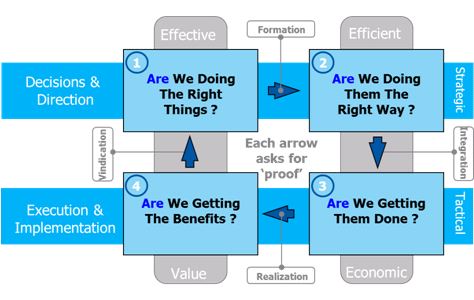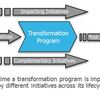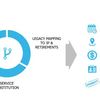Significant investments require significant returns. How do companies ensure their benefits are measured, tracked and realized during IP Transformation Programs?
Success is Not Guaranteed
Think about the hardest project you have ever delivered. Just think back… that one ‘special project’, the one that spiraled out of control, the one where the requirements kept changing, the one where the objectives kept moving, the one project that would not de-scope, where the tsunami of work was towering over the team, and impossible deadlines were looming. Yes, that one.
Most of us have experienced THAT project. And we probably sat with our colleagues, asking ourselves how a project under such pressure could even exist. Why would the sponsors not revise the scope, refocus the team, or even reinvest the budget elsewhere?
We all know that technical projects can go awry. IT, Networking and Engineering projects – famously 50% overrun on budget, and many are cancelled altogether.
So, what are the figures for complex Transformation Programs? For Programs where IT, Network, Operations and Engineering are undergoing change simultaneously. With an objective eye, it’s easy to question how any of them actually deliver results. But indeed they do.
But, how, and what can we measure to be certain we are achieving the desired results?
The Value of Tracking the Benefits
This is where Benefits Management steps in. The major goals of the approach are to ensure that:
- Everyone that is associated with the program of investment will have a clear understanding of what business benefits can be achieved, and therefore buy in is more likely
- Senior management have the consistent benefits information they need to make considered funding decisions
- There is a common understanding during the life of a program as to the key objectives
Benefits Management provides a set of disciplines that operate out of the Program Management Office (PMO), and ensure the benefits of complex programs are constantly measured, tracked, assessed and reshaped. Programs that truly measure benefit as a real ‘outcome’ (rather than waiting for the end of the program) are more agile in adapting to changing conditions and can reshape to meet new requirements. Benefits management is in-fact the fourth dimension to the classic time/cost/quality triangle of managing good projects.
How Does It Work?
The role of Benefits Management is to answer the four key questions in planning and delivery:
These questions are addressed through three phases of planning and measurement;
The Strategy Phase is focused on reviewing the company’s IP Transformation strategy, in order to select at a number of sub-programs that can deliver benefit or align existing change programs with that strategy. A high-level benefits map should be produced at this stage.
The Program Phase is concerned with the definition and selection of projects and initiatives to create a portfolio that will deliver the required benefits. This is the phase where most use is made of the Benefits management tools such as the Benefits Plan, Benefits Register and Risk Analysis.
The Project Phase is about the delivery of projects and initiatives to support the program, the monitoring of actual benefits against targets and benefits harvesting.
What is the Cost?
Managing benefits is a key component of complex change programs. Without it, the technical, operational, IT, business and engineering change aspects of the program can happily deliver in parallel, and then fail to coordinate the realized benefits during the program. A small investment in dedicated PMO resources to measure, track and adjust the program is a small price to pay for assurance of successful delivery. Typically, this team is no more than two or three dedicated resources and the assurance they provide outweighs the cost.
Measure, Track and Realize
We started by discussing our most challenging project experiences. In many cases, Benefits Management can reshape projects far earlier, and save those projects from failure.
The approach of measuring benefit, tracking the measurable benefits and realizing the benefits provides the tools and information for program managers to govern the program, and reshape it, or address constraints if benefits are not likely to be realized.
Benefits Management ensures that in two years’ time, we are discussing the realized benefits over a coffee, and not talking about another one of ‘those projects’. For the small cost of a few specialist resources, that’s a worthwhile investment.
These ideas are explored further in the white paper “Better business case management for IP Transformation.”
For more information on how to address the challenge of building and managing the business case for IP Transformation, please see our earlier blogs on TMCnet:
- The Business Case for IP Transformation: Is Your Business Ready?
- The Business Case for IP Transformation: Managing the Service Roadmap
- The Business Case for IP Transformation: Creating the Case












